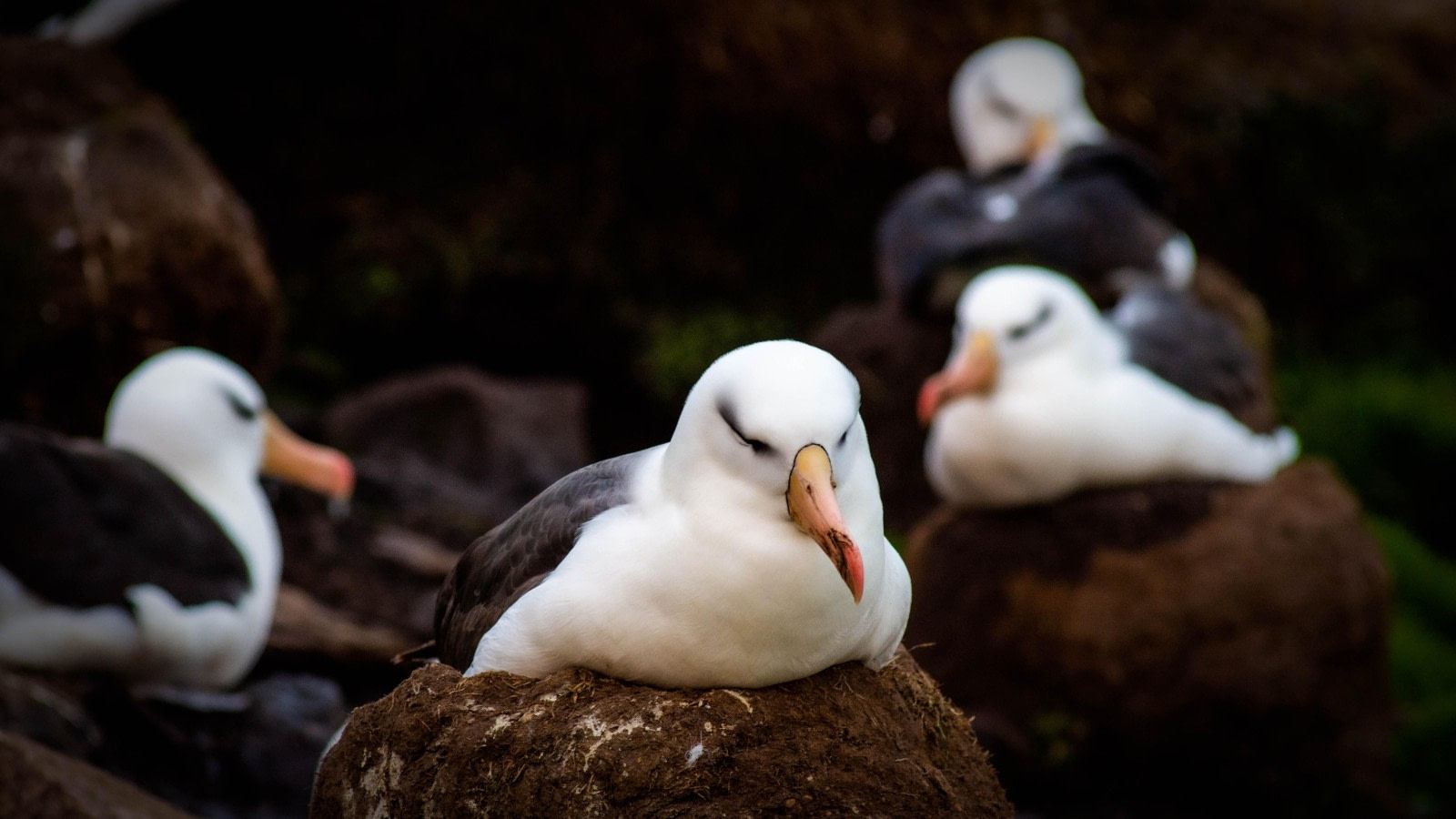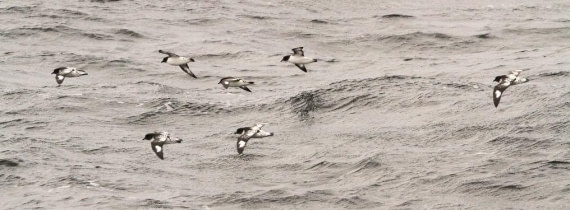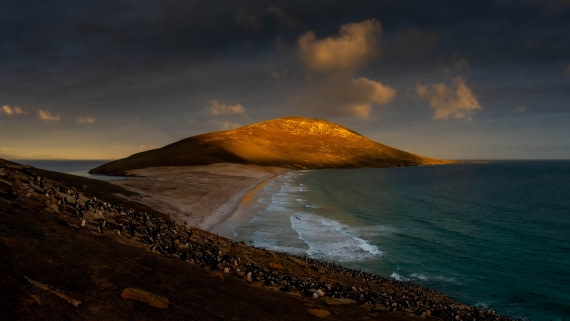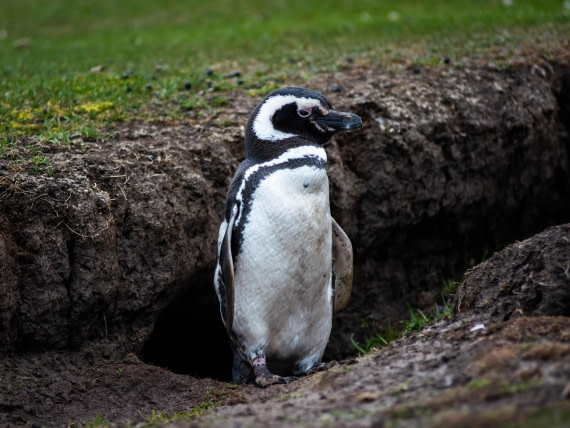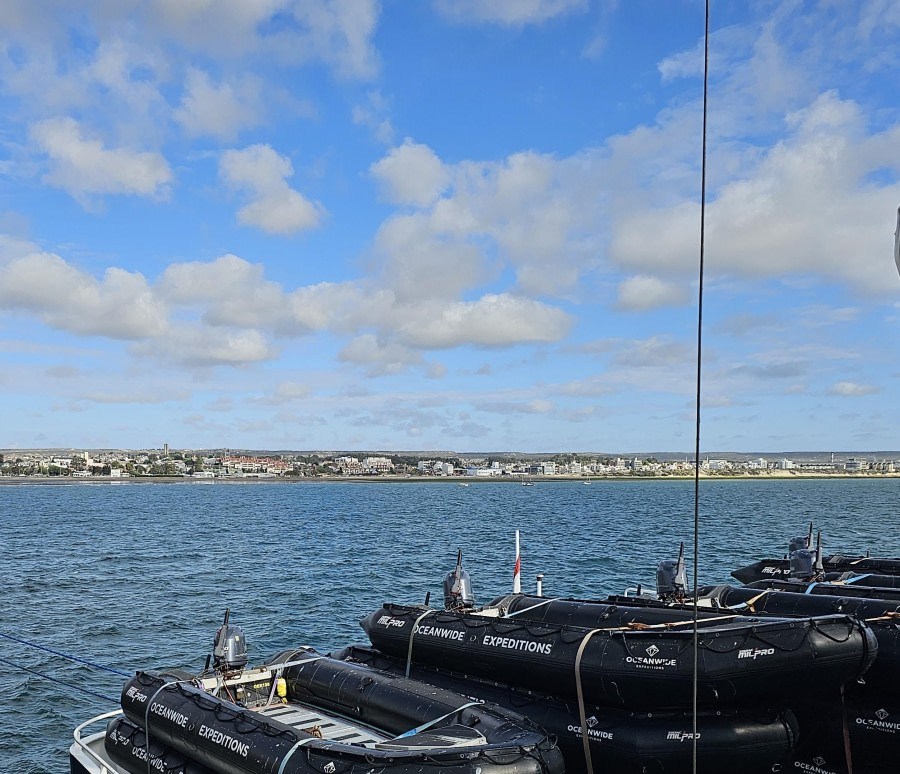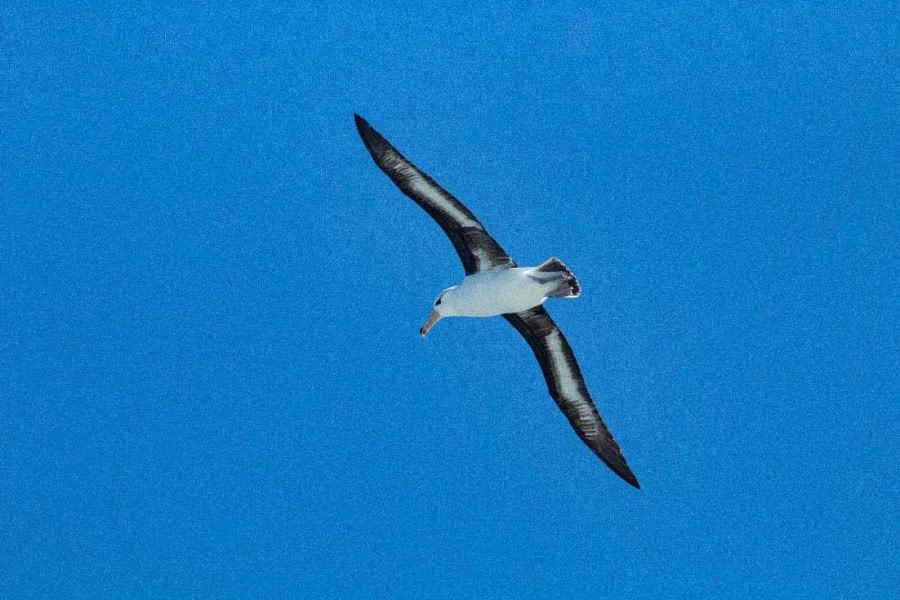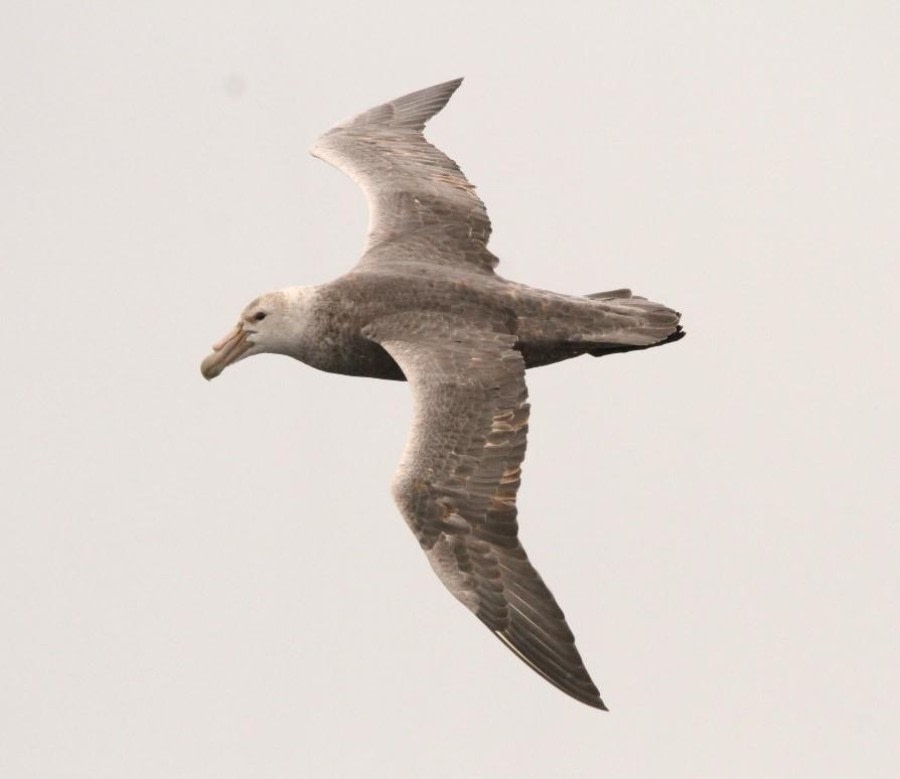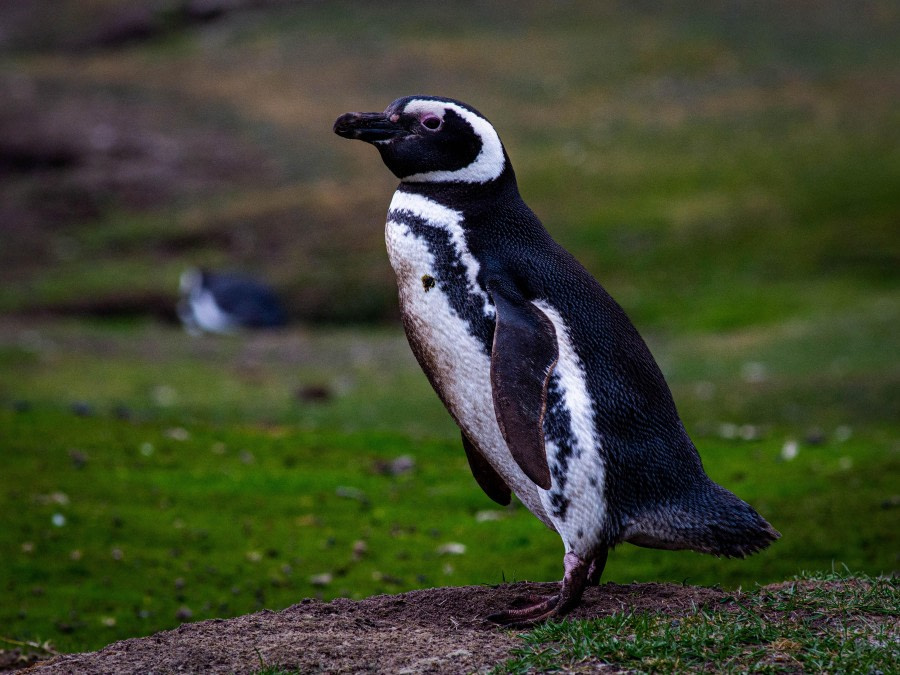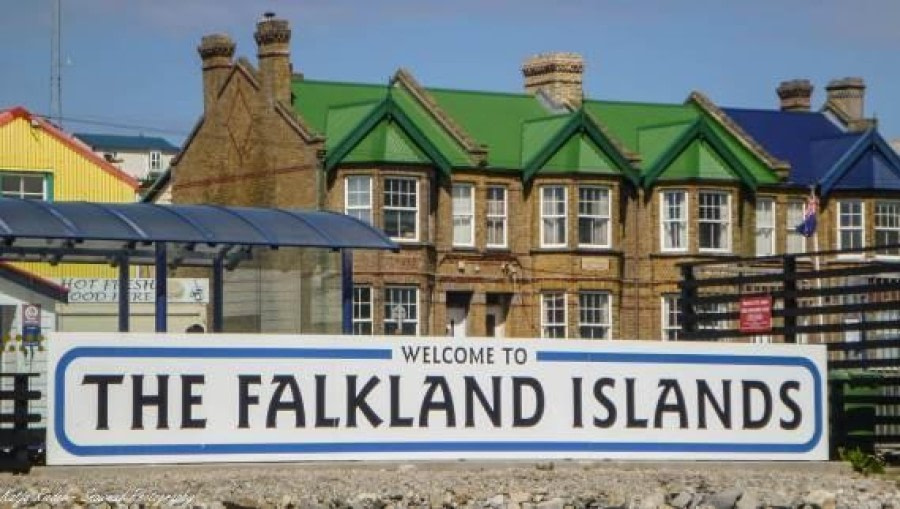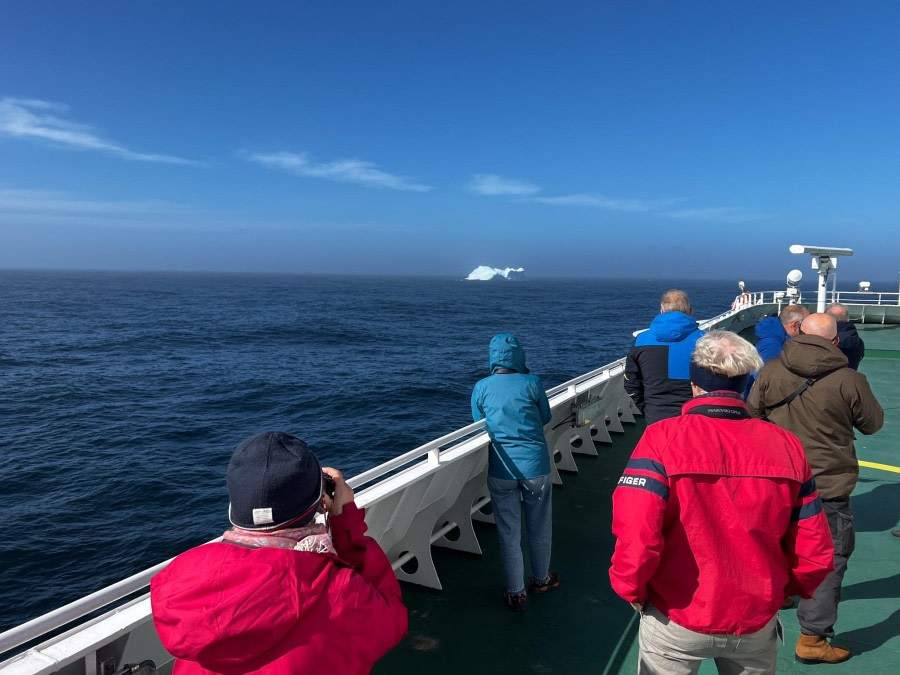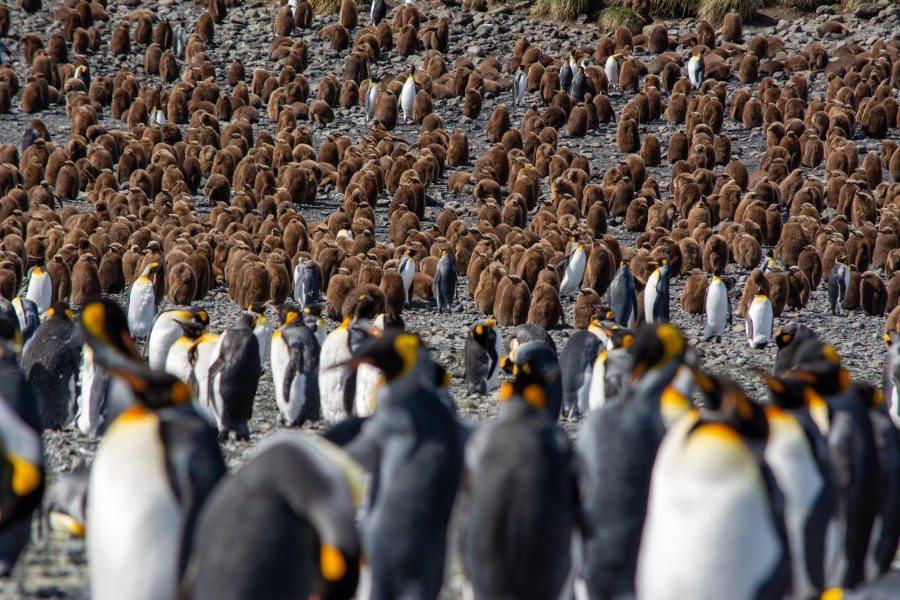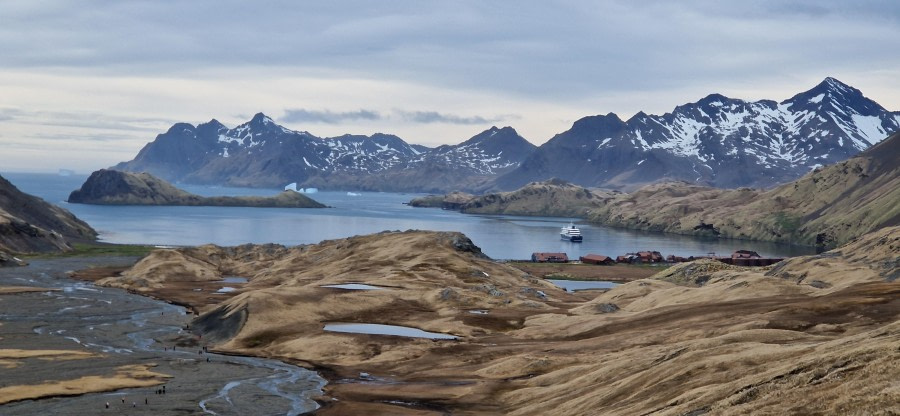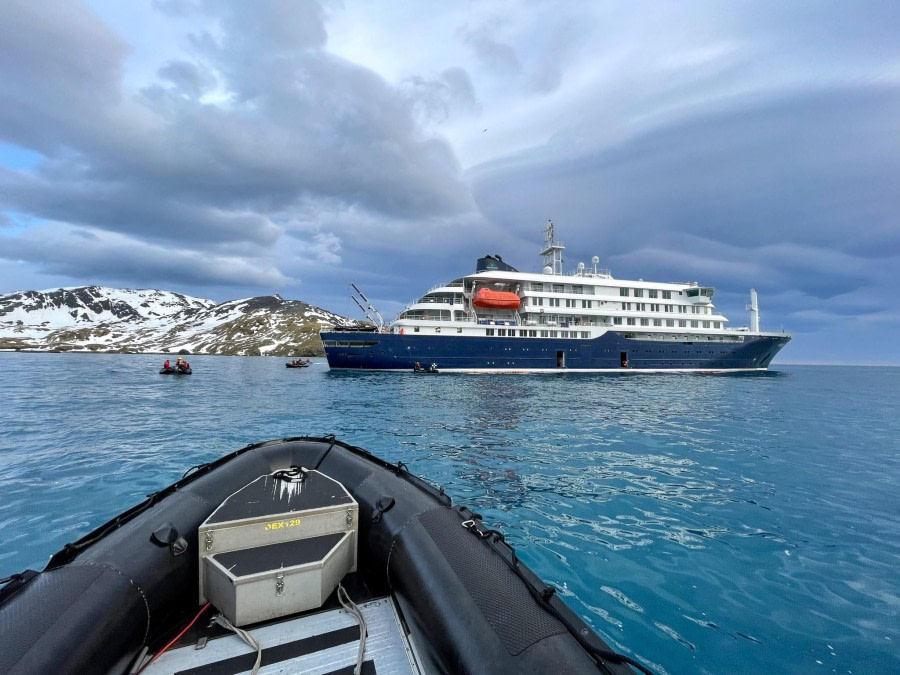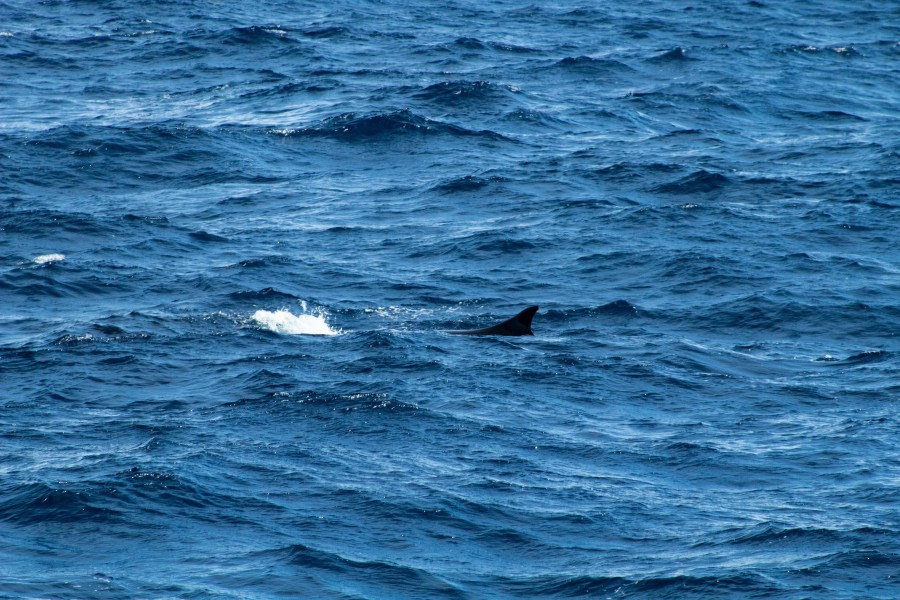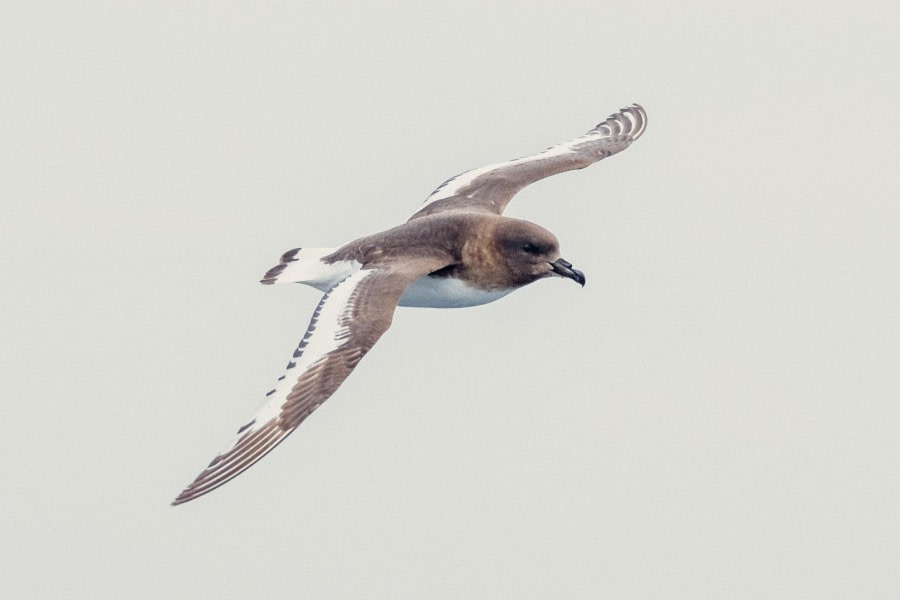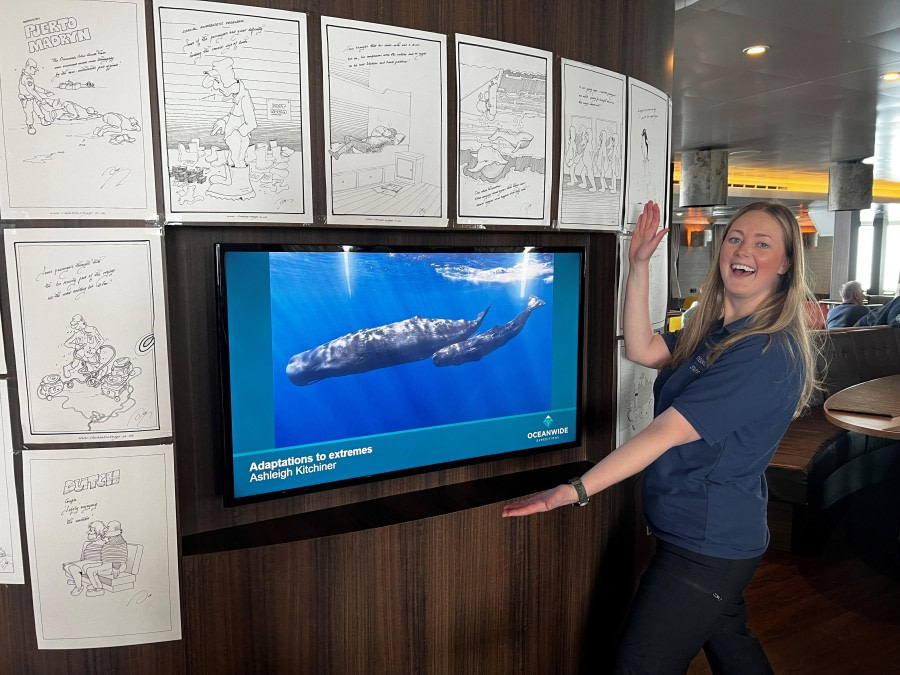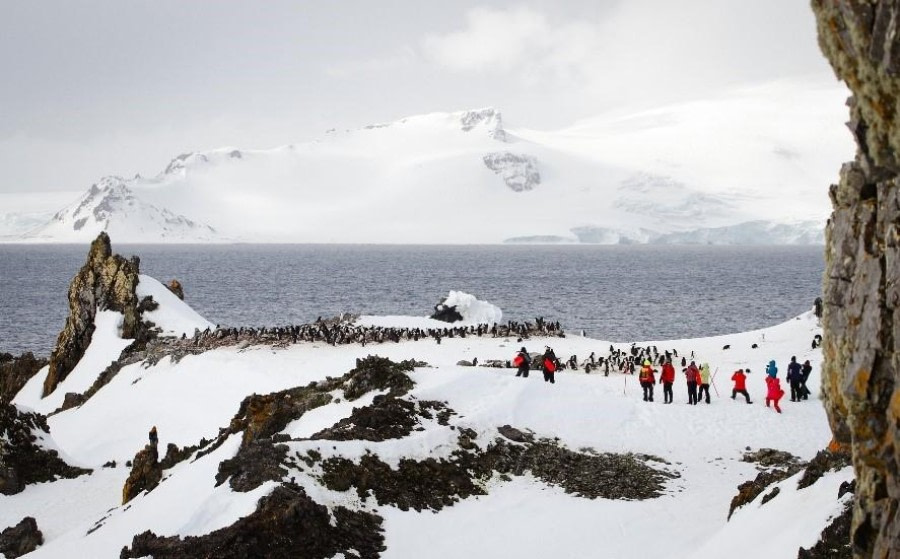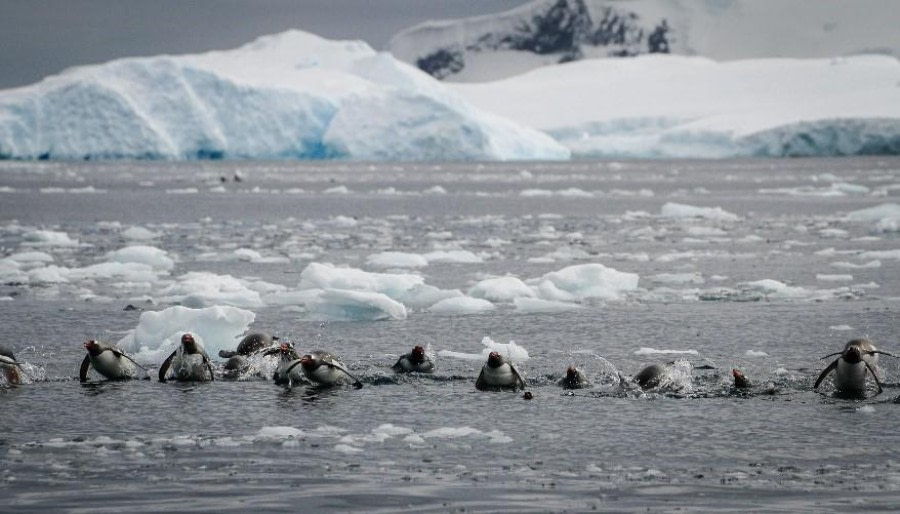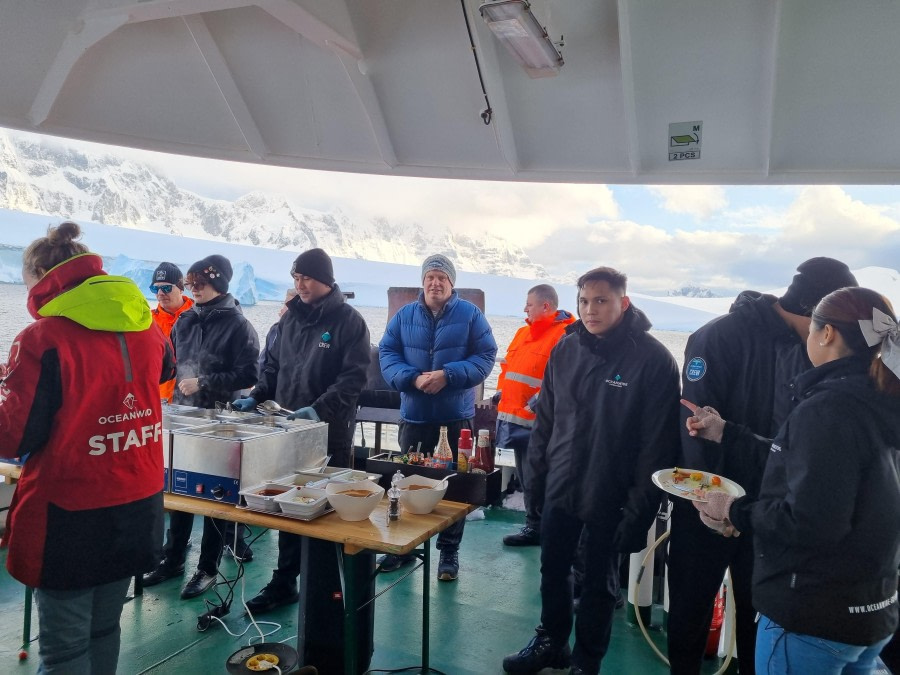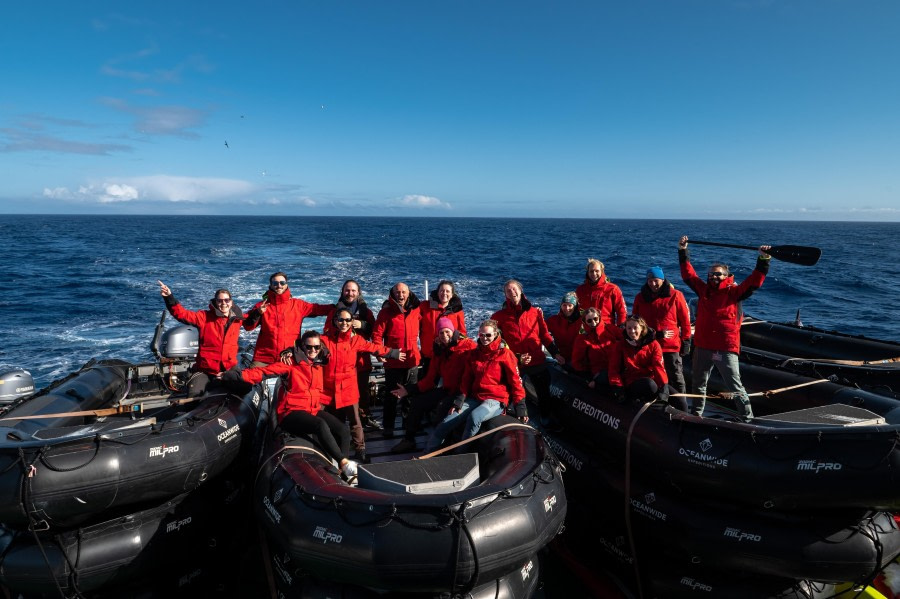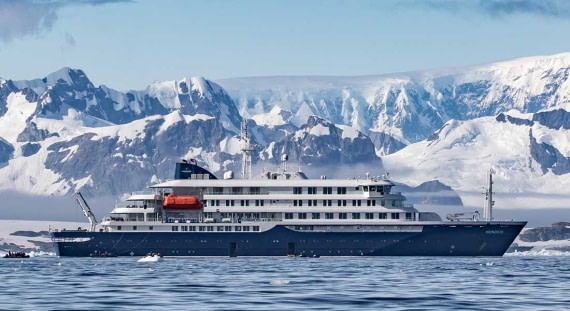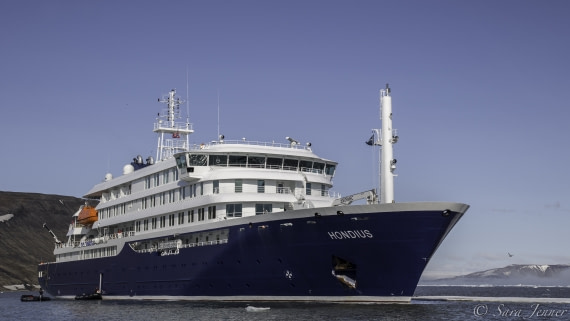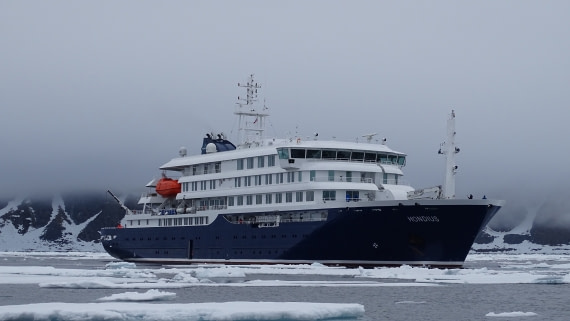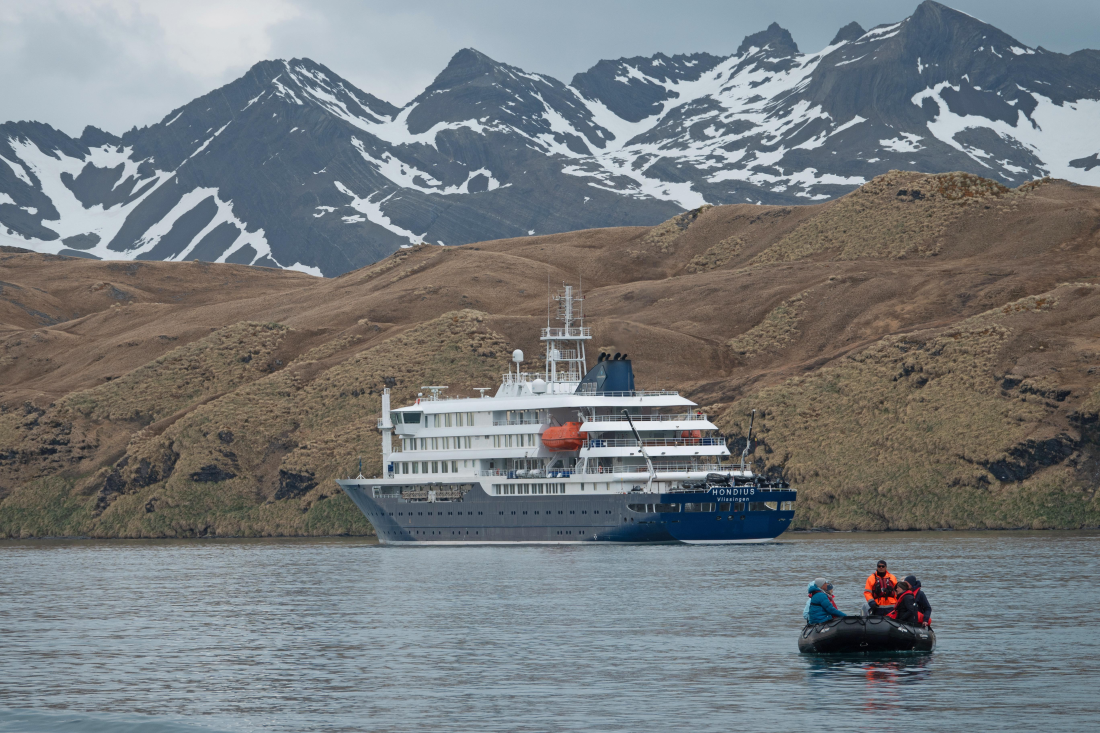| Fecha: |
27.10.2023 |
| Posición: |
51° 23’ S / 060° 25’ W |
| Viento: |
NE 3 |
| Clima: |
Rainy |
| Temperatura del Aire: |
+3 |
To deceive nature! That was our cunning plan. Yesterday the members of our expedition team consulted meteorological reports incessantly and reached a disheartening conclusion. There would be no miracle; the weather on the 27th of October would be simply dreadful all day long: rain, winds gusting at 50 knots and towering waves that would make landing on the shore a life-threatening endeavor. So, we had to resort to craftiness. Since we couldn't start the landing at 9am in the morning, who said we couldn't finish it at the same time? What time was sunrise, by the way? 5am in the morning? Excellent!
At 4:45, Pippa, our expedition leader, announced over the loudspeaker that it was time to rise and wished us a good morning, urging us to leave our cozy blankets behind and embrace the adventures awaiting. It was still pitch black when the intrepid members of our expedition team boarded the Zodiacs and set off for the shores of Saunders Island to prepare for our landing. Playful Commerson's Dolphins, brimming with joy that guests had finally arrived after a long hiatus that felt like an entire winter, leaped playfully out of the water, giving our zodiacs an honorary escort to shore.
As the rays of the rising sun gilded the peak of a high hill to our left at the landing site, the official start of our operation was declared. Zodiac after zodiac were raced across the calm waters and, upon reaching the shore, were hastily disembarked, eager to rid ourselves of the heavy life jackets. White, fine sand, calm waters, and... penguins! The latter stared at us in complete bewilderment, flapping their peculiar wings and trying to fathom who we were and what we wanted.
The trail had already been marked. We had a one-and-a-half to two-kilometer walk ahead of us along the seaside. Gentoo Penguins sat on their nests made of mud and grass, diligently incubating their eggs. It was amusing to observe how they would turn their necks towards us, peering with their beaks almost as if to say, "Move along, folks, we've got plenty of problems here already!" And indeed, they had their share of troubles. From above, pesky Skuas and the Striated Caracaras circled, keeping a watchful eye on the penguin colony. If any penguin made a mistake, a skua would swoop in and snatch a precious egg! It would clamp it in its beak, perch at a distance, and crack the shell with a beak strike, feasting first on the egg white, then on the yolk. Nature here could be ruthless, but there was little to be done. Beneath our feet, the occasional crunch of eggshells served as remnants of the skua's dinner. The Gentoo Penguins didn't lose heart. The predators consumed one egg, and well, they would just have to lay another. The local summer was much longer than the Antarctic one, providing ample time to raise their chicks.
However, Magellanic Penguins were much cleverer; they didn't build nests. Instead, they dug deep burrows for themselves. There, no Skua, Striated Caracaras, or any other predator could reach them. As we followed our trail, the Magellanic Penguins, driven by curiosity, peered out of their burrows, observing us.
On a slope that was more aptly described as a "cliff," a colony of Cormorants had settled, while right next to them, Rockhopper Penguins had claimed a piece of land as their own. These little, agile rascals, living up to their name, were constantly in motion, hopping from rock to rock. We lingered beside them, taking photographs, and simply watching their bustling activities. Eventually, the trail led us to a colony of Black-browed Albatrosses. These enormous and majestic birds, trumpeting and clacking their beaks, were meticulously tending to their perfectly cylindrical nests. Most of the Black-browed Albatrosses were already incubating their eggs, eagerly awaiting the arrival of their offspring. The albatrosses, while frowning their brows at us, still posed for photos. With a whoosh, they occasionally soared through the air above us, their massive wings slicing through the sky.
Unfortunately, it wasn't just the whistle of wings that reached our ears. It was increasingly mingled with the sound of the whistling wind. The once calm waters had now turned into rolling waves, intermittently frothing and churning. After gazing at the Black-browed Albatrosses, we set off on the return journey. Somewhere halfway to our landing point, we had the option to turn right and arrive at another beach, opposite the one we initially landed on. But who are those penguins standing by the water's edge? They are none other than King Penguins! There were only a few of them, some still young chicks who were clad in massive, clumsy brown pajamas made of soft, warm feathers. What a surprise!
Strolling purposefully past the penguins were Kelp and Dolphin Hulls. They swiveled their heads and occasionally pecked at the sand, devouring crustaceans lurking within. Oystercatchers ran between small sandy hills, astonishing us with their long, bright red bills. On the hillside, periodically drawing attention with their loud bleating, Sheep grazed. In the local setting, they were perceived by us as something quite out of harmony with the surrounding landscape, if not as extraterrestrial beings.
One way or another, it was time to return to the ship. The sky had become overcast, and the wind was beginning to be a nuisance. Moreover, breakfast was being served in the restaurant. While we enjoyed breakfast the wind rapidly intensified, 30 knots, 40 knots, 50... Hondius leaned to the port side. Waves, bristling with white foam and seething with fury, pounded against the starboard. It became clear that, unfortunately, any hopes of an afternoon shore landing were out of the question. It was, of course, a disappointment, but after our wonderful and unforgettable morning walk, none of us harbored any feelings of resentment.
Hondius set a course for Stanley, the capital of the Falkland (Malvinas) Islands. We spent the rest of the day watching a film about the war between Argentina and the United Kingdom and listening to fascinating lectures by our guides such as Misha’s lecture on Bird Migration. It was a fantastic start to our landings.
